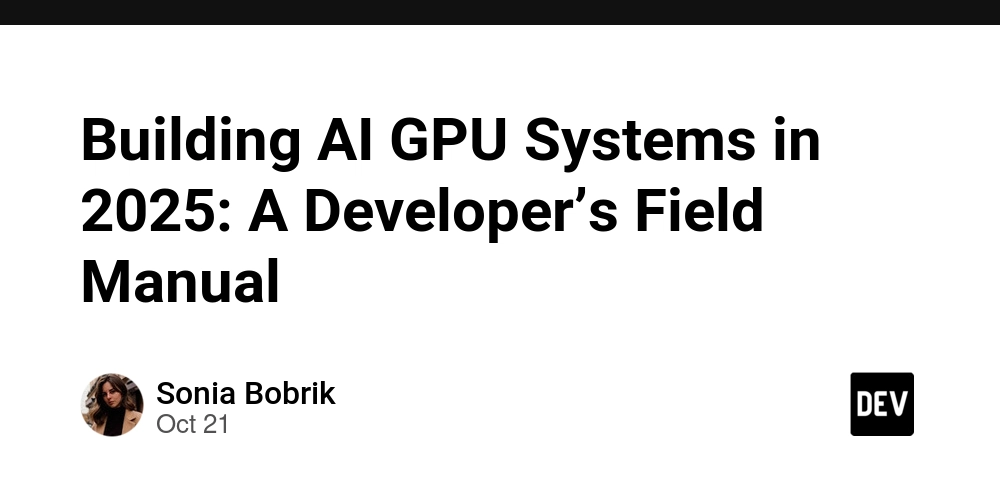If you’re building or operating GPU infrastructure in 2025, you don’t need hype — you need a clear baseline, a way to keep promises under load, and a path to scale without blowing up the budget. In practice, the most reliable map of the terrain is the vendor guidance, and the NVIDIA docs GitBook remains one of the few sources that ties drivers, libraries, and hardware realities together in a way you can act on today.
The uncomfortable hardware truth
Performance ends up limited by the part that’s hardest to change later: power delivery and cooling. If you plan for 6–8 kW per node and discover you really need 10–12 kW once you enable higher TDP profiles, you’re negotiating with physics, not procurement. Keep a running inventory of real, measured draw under your production kernels, not the brochure numbers. Document your topology — which nodes have NVLink or NVSwitch, which are PCIe-only, which racks share a PDU — because your collective throughput will degrade to the weakest hop. Reliability starts in that topology diagram.
Memory is the second hard wall. H100s change the math for large models, but HBM is still finite and expensive. You will hit memory pressure before you hit flops, especially with longer context windows or multi-modal pipelines. Mixed precision (BF16/FP16) gets you far, but the moment you add retrieval or video, your dataset and intermediate tensors will want to spill. Plan your storage tiers for that, not just checkpoints.
The software stack that actually ships
A stable base looks boring for a reason: pinned versions. CUDA + driver + NCCL + container runtime + Kubernetes device plugin need to be version-locked across the fleet. The fastest path to flaky clusters is “rolling upgrades by vibes.” Treat drivers like schema: one change gate at a time, preflighted with synthetic and real workloads.
For multi-tenant clusters, MIG is your friend when you care about fairness and isolation more than single-job peak speed. For single-team research sprints, whole-GPU scheduling with topology-aware placement keeps collectives fast. Either way, wire in health checks that know the difference between “container is up” and “NCCL rings are actually formed.”
Performance is a pipeline problem
Your GPUs are only as fast as the slowest stage feeding them. If you see 30–40% utilization with CPUs idling, the bottleneck is I/O or preprocessing. Keep raw data in a format that streams well (Parquet, WebDataset shards), colocate hot shards with compute, and keep your augmentation on-GPU when possible. Profile end-to-end: measure time in readers, decoders, host→device copies, kernels, device→host copies, and write-backs. You cannot optimize what you can’t see.
When inference enters the mix, latency SLOs change the shape of the work. Token-level batching, prompt caching, and paged KV memory become first-class. Optimizing only for throughput will bite you the day a product owner says “p99 must be under 300 ms.”
Reliability is a feature, not a wish
If your stakeholders hear “it’s training” as an excuse for missed deadlines, you’re leaking reliability debt. Define service level objectives for the platform (e.g., “jobs admitted within 10 minutes, 95% of the time”) and keep an error budget you can spend consciously. The conceptual tools are old but sharp; the canonical reference is the Site Reliability Engineering playbook from Google — start with the chapter on signals and alerting, because great dashboards are cheaper than outages and politics. For a practical primer, see the SRE monitoring fundamentals.
Checkpointing is cheap insurance. Save more often than you think during hyperparameter sweeps and early-stage architecture work; thin it out once runs stabilize. Train your team to do disaster recovery drills: kill a worker during an all-reduce, bounce a top-of-rack switch, throttle storage, and make sure your runbooks are good enough that a new hire can get you back to green.
Security and multi-tenancy without the drama
GPU platforms are attractive targets. Role-based access controls, per-namespace quotas, network segmentation, and secrets management are table stakes. Add image signing and a minimal base image with only the libraries you need. Least privilege beats least friction — once the first cross-tenant bug turns into a postmortem, the organization will pay the policy cost anyway.
If your org is aligning to recognized guidance, the AI risk lens is helpful to socialize trade-offs with leadership and auditors. A good foundation is the NIST AI Risk Management Framework, which gives you language to discuss robustness, transparency, and incident response without descending into hand-waving.
Cost is a control loop, not a spreadsheet
Procurement asks “how much?” Engineering answers “it depends.” Make it depend on measured money, not hope: tag every job with an owner, project, and purpose, export cost per run, and surface p95/p99 job wait times against utilization. When you can see the shape of waste (e.g., 22% of jobs run under 15 minutes, 18% of GPUs sit idle after 7 p.m.), you can pick the right tools: preemptible queues, bin-packing, smaller MIG slices for long tails, or moving certain workloads to dedicated inference pools.
A one-page checklist you can run this week
- Map reality: draw your physical and logical topology (power, cooling, NVLink/NVSwitch, PDUs, TORs, racks) and annotate with measured wattage under your real kernels.
- Pin versions: freeze driver/CUDA/NCCL/container runtime/device plugin; create a rolling plan with a canary node and synthetic + real tests.
- Prove collectives: run NCCL/RDMA loopback and multi-node ring tests nightly; alert on sudden latency or bandwidth drops.
- Profile the pipeline: instrument readers/decoders/transforms/H2D/kernels/D2H; fix the slowest stage before buying more GPUs.
- Define SLOs: pick job-admit and job-success targets; create an error budget and publish burn-rate charts.
- Checkpoint like you mean it: standardize intervals by job class; validate restore on fresh nodes weekly.
- Tag costs: require project/owner labels; show cost per run and per goal (e.g., “reach 75 Rouge-L” or “p99 under 300 ms”).
- Test failure: game-day a node loss, a switch flap, and a storage throttle; update runbooks until a new teammate can recover you.
What “good” looks like in 90 days
Your dashboards tell a coherent story: GPU utilization above 70% for training during peak windows, inference meeting latency targets with headroom, queueing predictable, and cost per successful experiment trending down. Developers can self-serve new environments without pinging platform every time they need a different CUDA minor. Incidents are boring, because you’ve seen each failure mode on purpose.
Just as important, the business starts to trust the platform. Product can plan launches around predictable inference behavior. Research can trade complexity for speed with eyes open, because you’ve priced each trade. Finance sees variance shrinking. The team sleeps more.
The near future (and how to prepare without rewriting everything)
Expect more memory-efficient attention kernels, better compiler-driven fusion, and wider adoption of low-precision formats that still preserve accuracy for many workloads. These show up as “free wins” when you keep your stack current — but only if you can upgrade safely. That’s why the boring work (version pinning, canaries, synthetic tests) is really future-proofing. The orgs that ship the most in 2026 won’t be the ones with the fanciest nodes; they’ll be the ones that can change their minds quickly without breaking what already works.
The hardest part is cultural: getting everyone to accept that reliability and speed can be the same goal. Once you instrument the work and publish clear thresholds, the arguments get shorter, the experiments get faster, and the platform becomes a compounding advantage. Keep your map honest, your feedback loops tight, and your upgrades small — and your GPUs will finally look as fast in production as they do in the keynote slides.



